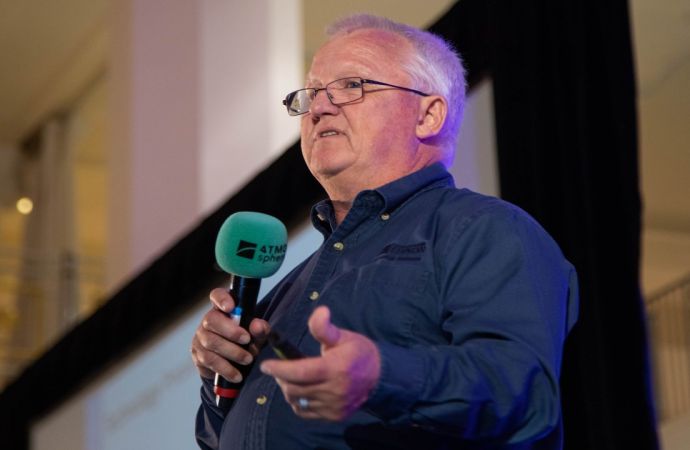The Baudette Ice Arena in Minnesota, U.S., is the lifeblood of the community, but like many other ice arenas in the region carries the burden of its failing R-22 refrigeration system installed over four decades ago. The community is hopeful the financial burden will not become too great as it looks to environmentally friendly replacements like ammonia and CO2, but desperately needs funding from the Minnesota State Senate’s grant scheme to complete the transition.

This is an edited version. Original article written by John Hamre, Let's Play Hockey.
Baudette residents hold their hockey tradition proudly. Current Minnesota Wild defenseman Keith Ballard, former Golden Gopher Jon Waibel and Divison I hockey-playing brothers Matt (St. Cloud State) and Aaron Gens (Alaska) all rank among its talented alumni.
But today, the Baudette Ice Arena is in dire need of renovation. The predicament facing Baudette, and many other ice arenas in Minnesota and the U.S., comes in the form of an ageing R-22 refrigeration system installed back in the 1970s.
Government funding a necessity for major system conversions
Many of these cooling systems utilise the refrigerant R-22 (commonly known as freon) as a once cheap, but now very expensive alternative with a high Global Warming Potential (GWP) of 1700. Under the guidelines set out in the Montreal Protocol, by 2020 chemical manufacturers will no longer be able to produce the ozone-depleting refrigerant in the U.S.
“The problem facing the Baudette arena is among the most severe in Minnesota with the community’s old, corroded system, costing between $20,000-$30,000 (€14,600-€37,000) annually to fix leaks in the pipes and replace leaked R-22.
These are funds spent annually on repairs to an old system, which uses a restricted refrigerant. These funds must be spent on repairs, so they cannot be saved towards the replacement costs of a new, regulation-conforming and environmentally safe ammonia cooling system.
Within many arena refrigeration systems like Baudette’s, there are roughly 6,000 pounds of R-22 circulating, within nearly 10 miles of piping beneath the ice surface. The potential catastrophe facing the arena, and others like it, is if the whole system fails (through leak or massive rupture), the entire 6,000-pound (2,722 kg) charge of R-22 would be lost into the atmosphere, and can last there for an estimated 12 years, having a harmful effect on the earth’s ozone layer.
The scheduled phasing-out of the use of R-22 under the Montreal Protocol, as sourced by the EPA includes:
- 2010 (Jan 1) – ban on the production and import of R-22 and other chemicals within standards, except for ongoing service of existing equipment;
- 2015 (Jan 1) – a ban on the production of and import of all HCFCs, except for the ongoing service needs of existing refrigeration equipments;
- 2020 (Jan 1) – a complete ban on production and import of R-22; after this date only recycled R-22 will be available
- 2030 (Jan 1) – a ban on all remaining production of and import to the U.S. of all HCFCs
Baudette’s dilemma is simple to evaluate – but not simple to solve – as is the case for many smaller communities with similar local ice arena situations. The cost of R-22 used to be cheap – less than $1 per pound in the early 1990s. Now, as R-22 use is continually being phased out, its price has skyrocketed to $15-$18 (€11-13) per pound.
The present-day cost to replace the entire 6,000 pounds of R-22 would be approximately $90,000-$100,000 (€66,000-€74,000). This would not include jackhammering out the concrete flooring, fixing the old, corroded and compromised piping system, and then relaying the piping system and concrete flooring – all expenses before spending the nearly $100,000 (€73,000) to replace the R-22.
The environmentally sound, long-term pathway for many ice arenas is to refit their cooling systems with natural refrigerants. There are two such alternatives: CO2 and ammonia.
Mighty Ducks bill assisting Minnesota's community-owned ice arenas
In Minnesota, elected leaders, local communities and citizen stakeholders have all worked to find solutions, as the Environmental Protection Agency’s implemented HCFCs bans are now taking effect.
In response, State Senators have authored the Mighty Ducks bill, commonly referred to as Mighty Ducks SF 423, introduced into the Minnesota State Senate to provide grants through the Minnesota Amateur Sports Commission (MASC) to the many community-owned ice arenas needing to revert from non-conforming cooling systems.
Posted in the Minnesota Senate on January 30, 2015, the bill has been referred to the State Senate’s Capital Investment Committee for approval.
“This is an attempt to make sure that the arenas all around the state have some resources available to them in order to make the mandated transition away from R22,” senator David Tomassoni said via email.
“It’s a competitive grant program and MASC will be the administrator of the money. Baudette should be eligible. We must continue to make communities whole throughout Minnesota to meet this unexpected need if hockey rinks are to remain open. It could take more than one funding cycle and more than the $3,000,000 (€2,190,000) in this bill.”
A similar bill in 2014 awarded about $1.5 million to the MASC in grants up to $200,000 (€147,000) to “develop new ice arenas, eliminate the use of R-22 refrigeration systems, improve indoor air quality and renovate current arenas.”
Barry Westerlund, of the Baudette Area Arena Association said the community desperately needed a Mighty Ducks grant.
“It’s the hub of the community. Hockey is the culture in Baudette. You can go to the rink any night from after school until 10-11 pm, and something is going on,” Westerlund said.
“The system was installed in the 1970s. The compressors have been rebuilt several times and every year or two we are repairing leaks in the floor due to a bad concrete pour that has caused the steel pipes to corrode.”
“We try to raise $60,000-$70,000 (€44,000-€51,000) a year to upgrade, but end up spending $20,000-$30,000 (€14,600-€37,000) for repairs and replacement of R-22.”
“We’ve got a line to purchase a reconditioned ammonia indirect system. We’re at a critical point. Because of the leaks, we’re monitoring the system all the time. Hopefully we’ll get a grant in the fall of 2015, and begin in the spring of 2016 replacing the old ice cooling system.”
Mark Roderigo and his brother own and operate Commercial Refrigeration Systems, of Virginia, Minnesota and added: “We build rinks all over the United States and none has a more immediate need for replacement of their R-22 system than the Baudette Arena. The Holmsten system is over 40 years old and needs to be constantly monitored for leaks. Baudette’s ice cooling system is totally ‘cancerous.’ They need to be first in line for a conversion.”
MASC associate director Barclay Kruse said there was no firm Mighty Ducks program in place for 2015 but remains ‘cautiously optimistic’ it will be approved by legislature.
“If that is established, then we will publish grant criteria. R-22 is one of several priorities identified in the past program last year, air quality being another one, and arena renovation being a third area,” Kruse said.
The MASC encourages communities interested in Mighty Ducks grants in 2015 to contact them and outline their specific needs. John Evans, who served as a director of the MASC from 2011-2014, is a strong advocate of the Mighty Ducks program.
Evans outlined the many benefits state investments will have in helping community arenas refit their ice-cooling systems, including cost savings in operations, higher energy efficiency and environmental benefits, but said that even with the grants, a large part of expenditure still has to come from other local funding sources.
“The money that is invested – I want to make sure we make good, solid decisions to solve problems. If we want to continue to be the state of hockey, policymakers need to help,” Evans said.
“When you look at the financial and environmental situations, the rinks at greater risk are the rural rinks. Probably, the solution is $15-20 million (€11-€14.6 million).”
“On MASC, we need to get out in front on this R-22 issue. It is important for the economic and environmental sustainability of these communities. Rinks are part of the identity of communities in the state of Minnesota.”
MORE INFORMATION
Related stories



